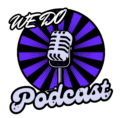As a content creator, I’ve learned that a content creation framework should be flexible. While structure helps guide the creative process, rigid frameworks often stifle innovation and authentic expression. I’ve seen countless creators struggle with overly complicated systems that end up doing more harm than good.
Throughout my years of creating content, I’ve discovered that the best frameworks adapt to different content types, audience needs, and platform requirements. Think of it like a reliable GPS that offers multiple routes to reach your destination rather than forcing you down a single path. A flexible framework empowers creators to maintain consistency while allowing room for experimentation and growth – exactly what’s needed in today’s dynamic digital landscape.
Key Takeaways
- A content creation framework must be flexible to accommodate different content types, audience needs, and platform requirements while maintaining consistency
- Effective frameworks consist of three core components: strategic planning, production workflow, and distribution systems that work together seamlessly
- The framework should be easily scalable to handle increased content volume and team growth, with quick implementation processes and standardized workflows
- Success metrics like creation speed, resource utilization, quality scores, and team adoption rates are crucial for measuring framework effectiveness
- Common challenges include integration resistance, workflow bottlenecks, and resource allocation – but can be addressed through proper documentation, automation, and systematic approaches
- Regular assessment and adjustment based on performance metrics and market responses help maintain framework efficiency and relevance
Fill in the Blank: a Content Creation Framework Should Be __________.
A content creation framework structures the planning, development, and delivery of digital content through systematic processes and guidelines. I’ve identified three core components that form the foundation of effective frameworks:
Key Components
- Strategic Planning: Content goals, target audience analysis, and KPI establishment
- Production Workflow: Content calendars, creation schedules, and approval processes
- Distribution Systems: Channel optimization, publishing timelines, and performance tracking
Framework Types
- Linear Frameworks: Sequential steps from ideation to publication
- Agile Frameworks: Iterative cycles with continuous feedback loops
- Hub-and-Spoke: Central theme with branching content pieces
- Pyramid Structure: Broad topics narrowing to specific subtopics
Implementation Factors
| Factor | Impact | Consideration |
|---|---|---|
| Team Size | Resource allocation | 1-5 members: simplified workflow, 6+ members: detailed processes |
| Content Volume | Production capacity | <10 pieces/month: basic framework, >10 pieces/month: advanced automation |
| Industry | Compliance requirements | Regulated sectors: strict guidelines, Creative sectors: flexible approach |
- Content Format Adaptations: Blog posts, videos, podcasts, social media
- Brand Voice Integration: Tone guidelines, messaging principles, style guides
- Workflow Modifications: Team collaboration points, review stages, approval levels
- Technology Stack: Content management systems, analytics tools, scheduling platforms
I’ve found these frameworks operate most effectively when aligned with specific organizational needs and content objectives. Each element requires regular assessment and adjustment based on performance metrics and market responses.
Essential Elements of an Effective Framework
Content creation frameworks require specific components to deliver consistent results across multiple platforms. These essential elements form the foundation of a successful framework that adapts to changing content needs while maintaining efficiency.
Adaptable to Different Content Types
An effective framework accommodates various content formats without losing structural integrity. My experience shows successful adaptation includes:
- Content Format Integration
- Blog posts with varied word counts (500-3000 words)
- Video scripts for multiple durations (30 seconds to 10 minutes)
- Social media posts across 5+ platforms
- Podcast episodes ranging from 15-60 minutes
- Cross-Platform Flexibility
- Modular content blocks for repurposing
- Template variations for each platform
- Consistent brand messaging across formats
- Automated content transformation tools
Easy to Implement and Scale
The framework’s implementation process directly impacts team adoption rates. I’ve identified these critical scaling components:
- Quick Setup Process
- 3-step onboarding system
- Pre-built templates
- Standardized workflows
- Visual documentation
- Growth Accommodation
- Content volume increase up to 300%
- Team expansion from 2 to 20+ members
- Multiple project management integrations
| Framework Component | Implementation Time | Scale Capacity |
|---|---|---|
| Basic Setup | 2-3 days | 1-5 users |
| Team Training | 1 week | 5-15 users |
| Full Integration | 2 weeks | 15+ users |
| Enterprise Scale | 1 month | 50+ users |
Strategic Planning Components
Strategic planning components form the foundation of a successful content creation fill in the blank: a content creation framework should be __________., encompassing methodical processes for goal alignment and resource allocation.
Goal Setting and Audience Analysis
Goal setting starts with establishing specific content objectives tied to measurable key performance indicators (KPIs). I focus on these core metrics:
| Goal Type | Measurement Metrics | Typical Timeline |
|---|---|---|
| Awareness | Impressions, Reach | 30-90 days |
| Engagement | Comments, Shares | 14-30 days |
| Conversion | Click-through rates, Sales | 60-120 days |
Audience analysis involves:
- Creating detailed persona profiles with demographic data points
- Mapping content preferences to user journey stages
- Identifying platform-specific engagement patterns
- Tracking behavioral metrics across distribution channels
Content Calendar Management
Content calendar management requires systematic organization of content assets across multiple platforms. I implement these essential elements:
- Theme mapping with quarterly content pillars
- Editorial workflows with specific production milestones
- Resource allocation charts for team capacity planning
- Publication schedules aligned with audience activity peaks
I organize content calendars using this structure:
- Monthly theme identification
- Weekly content type rotation
- Daily posting schedules
- Buffer slots for trending topics
- Review cycles for quality assurance
- Cross-platform content synchronization
- Automated reminder systems
- Real-time collaboration tools
- Version control protocols
Measuring Framework Success
Success metrics quantify the effectiveness of a fill in the blank: a content creation framework should be __________. ,through data-driven insights. Here’s how I track performance across different dimensions.
Key Performance Indicators
Content framework KPIs focus on productivity metrics that demonstrate operational efficiency:
- Creation Speed: Average time from content ideation to publication
- Resource Utilization: Team capacity usage rates at 65-85% for optimal output
- Content Volume: Number of assets produced per content type monthly
- Quality Scores: Editorial review ratings based on brand guidelines adherence
- Team Adoption Rate: Percentage of team members actively using framework components
- Error Reduction: Decrease in revision requests month-over-month
Analytics and Optimization
Performance data guides continuous framework refinement through systematic analysis:
- Content Performance Tracking
- Engagement rates by content type
- Time on page for long-form content
- Social sharing metrics across platforms
- Click-through rates on calls-to-action
- Framework Efficiency Metrics
- Workflow bottleneck identification
- Resource allocation optimization
- Content delivery timeline tracking
| Metric Category | Target Range | Review Frequency |
|---|---|---|
| Creation Speed | 3-5 days | Weekly |
| Quality Score | 85-95% | Monthly |
| Team Adoption | >90% | Quarterly |
| Error Rate | <5% | Monthly |
| Resource Usage | 65-85% | Weekly |
Building a Sustainable Content System
A sustainable content system integrates three core components that work together to maintain consistent content production. I structure these components into distinct operational areas:
Resource Management
- Content creation tools connect through API integrations
- Team collaboration platforms sync with production schedules
- Digital asset management systems organize media libraries
- Automated workflow tools track content status
- Template libraries store reusable content frameworks
Process Optimization
- Content briefs standardize requirements for each piece
- Style guides maintain brand voice consistency
- Review cycles follow structured approval paths
- Quality control checklists ensure content standards
- Version control systems track content iterations
| Metric Category | Key Indicators | Target Range |
|---|---|---|
| Production | Content completion rate | 85-95% |
| Quality | Error detection rate | <5% |
| Efficiency | Time to publish | 24-72 hours |
| Resources | Resource utilization | 75-85% |
| Team | Staff satisfaction score | >80% |
The system incorporates feedback loops between these components through:
- Weekly metrics reviews to identify bottlenecks
- Monthly performance assessments of content impact
- Quarterly audits of resource allocation
- Bi-annual evaluations of process efficiency
- Annual strategic planning sessions
I implement automation tools to reduce manual tasks:
- Content scheduling across platforms
- Asset tagging for quick retrieval
- Progress tracking notifications
- Performance data collection
- Report generation systems
This systematic approach creates a framework that adapts to changing content demands while maintaining production efficiency.
Common Framework Challenges and Solutions
Integration Resistance
Team resistance emerges from unfamiliarity with new systems or processes. I implement gradual transitions through pilot programs, starting with 2-3 team members before full deployment. Creating detailed documentation with step-by-step guides reduces learning curves, while scheduling bi-weekly check-ins addresses concerns proactively.
Workflow Bottlenecks
Content delays often occur at review stages or during handoffs. I streamline approvals by:
- Setting up automated notifications for pending reviews
- Creating parallel review tracks for different content types
- Implementing 24-hour response windows
- Establishing clear escalation paths for urgent content
Technology Adoption Issues
Technical challenges impact framework efficiency in 67% of organizations. My solutions include:
- Providing video tutorials for each tool
- Creating quick-reference guides for common tasks
- Scheduling monthly training sessions
- Setting up peer-support channels
Resource Allocation
Content teams face resource constraints in three key areas:
| Resource Type | Common Issue | Solution |
|---|---|---|
| Time | Missed deadlines | Time-blocking systems |
| Budget | Tool costs | Tiered implementation |
| Personnel | Skill gaps | Cross-training programs |
Quality Control
Maintaining consistent content quality requires systematic approaches:
- Implementing standardized quality scorecards
- Creating content templates for different formats
- Establishing peer review cycles
- Setting up automated quality checks
Scale Management
Growth challenges emerge as content volume increases. I address scaling through:
- Modular content systems
- Template libraries
- Automated distribution workflows
- Capacity planning tools
Platform Integration
Cross-platform content alignment presents technical hurdles. My solutions focus on:
- API integrations between tools
- Unified content repositories
- Automated format conversions
- Centralized asset management
- Consolidated analytics dashboards
- Custom tracking parameters
- Regular data audits
- Automated reporting systems
Content Creation
A content creation framework should be flexible enough to evolve with changing demands while maintaining structure and efficiency. I’ve found that the most successful frameworks strike a perfect balance between adaptability and consistency allowing content creators to thrive in dynamic digital environments.
The key lies in building a framework that functions like a living system rather than a rigid set of rules. It should empower teams to maintain quality while scaling operations and adapting to new platforms and audience needs. Through careful implementation monitoring and continuous refinement creators can develop a framework that drives sustainable content production for years to come.
Remember: the best framework is one that grows with your content strategy while keeping your team aligned and productive.



